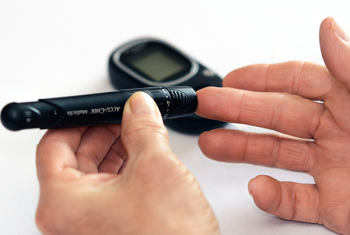
By Lisa Richter, Neighborcare Health
What is diabetes?
Diabetes is a life-changing health condition that occurs when your body cannot make enough insulin or your insulin is not working well. Your body uses insulin to keep your blood sugar at a healthy range. If blood sugar stays too high, serious health issues like kidney failure, blindness, nerve damage and heart disease are more likely to occur.
The ABCs
If you have diabetes, regular health care is important for staying healthy and preventing heart attack and stroke. This means seeing your medical provider at least twice each year and getting your blood checked at least once each year. Keeping track of three key areas—the ABCs— can help you live well with diabetes and lower your risk for a serious health issue.
A—A1C Test
This blood test helps you and your medical provider see if your diabetes treatment or prevention plan is working for you. This test measures the average glucose, or sugar, in your blood over the past three months. Ask your medical provider how often you should get tested and what A1c level is healthy for you.
B—Blood Pressure
Blood pressure tells you how hard the heart is working to move blood through the body. The higher your blood pressure, the harder your heart has to work. Nearly 2 out of 3 people with diabetes have high blood pressure. Blood pressure is usually checked at each medical appointment. Ask your medical provider what blood pressure level is healthy for you.
C—Cholesterol
Maintaining normal cholesterol levels can help prevent heart disease. A cholesterol test measures the “good” and “bad” cholesterol in the blood. “Bad” cholesterol, or LDL, builds up and clogs arteries. Ask your medical provider how often you should get your cholesterol tested and what levels are healthy for you.
Tips to prevent and manage diabetes
About 1 in 3 adults have prediabetes, a serious health condition that puts people at a high risk of developing type 2 diabetes, heart disease and stroke. If you have prediabetes, a care team can help you make lifestyle changes to prevent diabetes. For example:
- Make a physical activity plan. Finding activities you enjoy can help improve your overall health. Try to be physically active at least 4-5 days per week – any activity counts!
- Choose healthy, affordable foods. Eating meals that are high in fiber and low in sodium, sugar, and saturated and trans fat can lower cholesterol, blood pressure and blood sugar.
- Create a weight management plan. Maintaining a healthy weight or decreasing your weight by 5-10 percent can prevent diabetes from developing. If someone weighs 200 pounds, by losing 10-20 pounds, and keeping it off, they can prevent diabetes!
- Quit smoking. Smoking doubles the risk of heart disease in people with diabetes.
Signs of diabetes or high blood sugar may include:
- Increased thirst and urination
- Unexplained weight loss
- Fatigue
- Blurred vision
- Increased hunger
- Sores that do not heal
- Tooth and gum problems
- Tingling or numbness in the hands or feet
Not everyone with high blood sugar or diabetes experiences symptoms. If you have relatives with diabetes or if you are over the age of 40, ask your provider to check you for diabetes. Most health issues with diabetes can be prevented if high blood sugar is found and treated quickly.
This article was provided by Neighborcare Health, an SHA partner. Neighborcare Health is the largest provider of primary medical and dental services for low-income and uninsured families and individuals in Seattle. They serve more than 75,000 patients each year at nearly 30 medical, dental and school-based clinics. Find a clinic in your neighborhood. All are welcome at Neighborcare Health.
